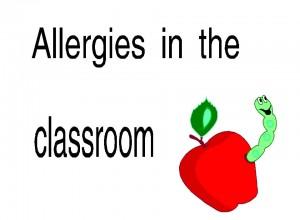 The American College of Allergy, Asthma and Immunology,ACAAI, reported that common allergy triggers in classrooms and playgrounds spur 14 million school absences a year in U.S.
The American College of Allergy, Asthma and Immunology,ACAAI, reported that common allergy triggers in classrooms and playgrounds spur 14 million school absences a year in U.S.
“Children with allergies and asthma should be able to feel good, be active and not miss any classes or activities this school year due to their condition,” allergist Dr. James Sublett, chair of the ACAAI Public Relations Committee, said in a college news release. “Helping children understand what triggers their allergy symptoms can keep them focused on their studies and not their allergies.”
The ACAAI advises that there are ways children can stay away from allergy triggers so they can feel their best, including:
- Avoid chalk dust. Children with asthma or an other allergy should wash their hands after handling chalk and not sit too close to the chalkboard.
- Steer clear of bees and wasps. Children should not disturb bees or other insects when they are outside. They should also avoid wearing brightly colored clothing on the playground. Parents of children with an insect allergy should consider talking to an allergist about venom immunotherapy, which can be 97 percent effective in preventing future reactions to insect bites.
- Pack lunch. Children with a food allergy, or food allergies should bring their lunch to school and avoid sharing food, napkins or utensils with their friends. Teachers, coaches and the school nurse should also be informed about each student’s food allergy. In extreme cases, a food allergy can cause anaphylaxis, a life-threatening reaction. Parents could also suggest that school adopt an allergen-free snack policy.
- Be aware of breathing troubles after physical activity. Children who experience trouble breathing during or after gym class, recess or other physical activities at school could have exercise-induced broncho-constriction or asthma. These children need to be seen by an allergist who can diagnose and treat their conditions.
- Don’t cuddle classroom pets. Children with allergies should avoid pets with fur and not be seated next to children who have furry pets at home. Parents can also request that teachers choose a hairless classroom pet, such as a fish or a frog.
Experts recommended that parents of children with allergy symptoms or asthma make an appointment with a board-certified allergist to develop a treatment plan.
More information
The U.S. National Library of Medicine has more about students’ health in school.
(SOURCE: American College of Allergy, Asthma and Immunology, news release, July 19, 2012)
 The American College of Allergy, Asthma and Immunology,ACAAI, reported that common allergy triggers in classrooms and playgrounds spur 14 million school absences a year in U.S.
The American College of Allergy, Asthma and Immunology,ACAAI, reported that common allergy triggers in classrooms and playgrounds spur 14 million school absences a year in U.S.
